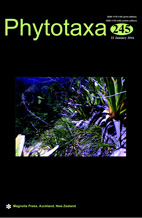Abstract
The variability of Himantoglossum s.s. populations in Greece has long been recognised, resulting in disagreements in their identification. For the purposes of the present study, several populations of H. jankae occurring throughout Greece were morphologically analysed and compared to populations of ambiguous taxonomic status from the Peloponnese and the island of Lesvos. The multivariate patterns of flower size variation of 24 Himantoglossum s.s. populations was investigated with a canonical variates analysis, and their morphometric relationships were further illustrated with a hierarchical cluster analysis. The results indicate that: a) H. jankae should be regarded as a very variable species, b) the two populations from Lesvos and Peloponnese cannot be separated from those of H. jankae, and c) there is a trend of gradual decrease in the dimensions of specific floral organs in a north to south direction, probably suggesting the effects of climatic conditions on floral morphology. All findings demonstrate that the studied populations indeed fall within the variability of H. jankae and not H. caprinum, a species whose presence in Greece cannot be attested on the basis of morphology.

